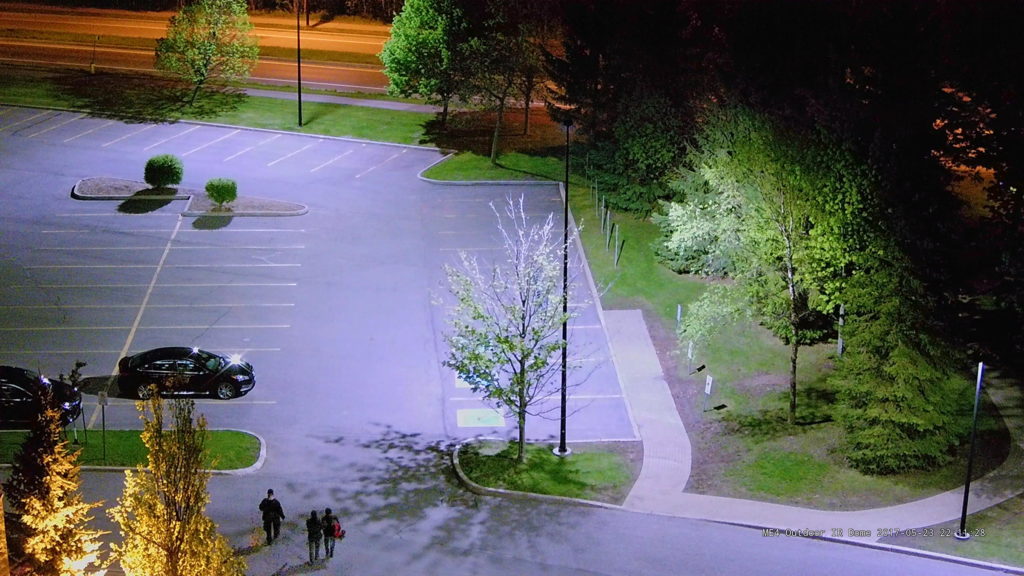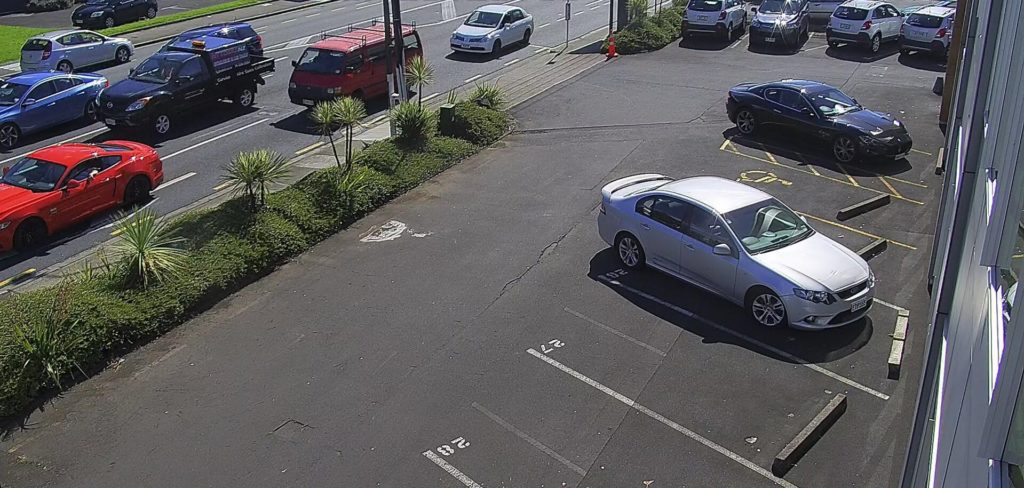Simple Tips to Extend Your NVR/DVR Storage Capacity
Advice for storing surveillance video for 30, 60, or 90 days or more
Filed under: Hybrid NVRs, IP Cameras
As more businesses move from analog to high-definition (HD) IP cameras, there’s increasing demand for video recording solutions with larger storage capacities.
Five years ago, commercial NVRs/DVRs with 2TB or 3TB hard drives were the norm. Today, purpose-built NVRs/DVRs for enterprise surveillance can accommodate over five times that amount and more when direct-attached storage (DAS) or network-attached storage (NAS) devices are added. Of course, all of this storage comes at a cost. Even if your recording solution is scalable, your budget probably is not, so finding ways to reduce storage without degrading video quality is becoming more of a priority.
This is particularly true for businesses with requirements around video archiving. Many banks, K-12 schools, and emerging businesses like cannabis dispensaries are required to keep video for 30, 60 or even 90 days, depending on government requirements.
If you’re struggling with demands for more video storage, or if you need to keep video for a specific period of time, consider the following to help extend NVR/DVR storage capacity:
1. Determine where HD video is needed – and where it’s not
The biggest factor in this discussion is IP cameras.
A video image captured by an HD IP camera is roughly four times the size of an image captured by an analog camera. That means it requires four times the bandwidth and storage capacity, so it’s important to consider exactly where you’re using HD video.
In some cases, it’s just not necessary. For example, if loss prevention is your main goal, keep HD cameras over your high-value assets or point-of-sale terminals, but use lower resolution cameras elsewhere.
2. Record on motion
If you don’t have legal requirements around 24/7 recording, configure your NVR/DVR to record on motion. It’s one of the simplest ways to reduce your storage. The majority of surveillance video is never used; often, it’s only when something occurs that you’ll need to review your video and investigate.
3. Do the math
Since many factors like camera bit rate, video compression, frames per second, and scene complexity affect storage, use a CCTV or camera storage calculator to determine the exact amount of bandwidth and storage you’ll need. Many video surveillance manufacturers, including March Networks, offer these tools free of charge as a convenient way to help you plan your system.
Using one of these tools, you can determine ahead of time how your camera recording will affect your storage and bandwidth, and where you might be able to make some adjustments.
4. Take advantage of camera settings
Many IP cameras have settings that can help you control the bit rate and reduce your storage. March Networks recently optimized the H.264 compression in our ME4 Series and SE2 Series IP Cameras with a Low Bit Rate (LBR) setting that automatically manages the bit rate to give you the best video quality with the lowest bit rate, based on scene complexity.
Our LBR mode can reduce storage and bandwidth consumption by as much as 50% in most applications. In our own tests of this feature, we’ve seen video streams that can drop below 1 Mb/s at 2MP (at 15 images or frames per second) with no noticeable degradation of video quality.
Here is an example to illustrate our point:
Let’s say you operate a cannabis cultivation business that’s required to record video continuously for 24 hours a day, and keep that video for 90 days. The law in your state also requires you to use at least 720p camera resolution. You need 60 cameras to cover your entire facility; naturally, you want the best image quality possible with the least amount of storage.
Using a typical 2MP IP camera, capturing detailed video with high scene complexity at 15 fps, you would need a total of 360 Mb/s of bandwidth, and 111.2 TB of storage to keep your video for 90 days.
Now, try that scenario again with a camera that uses a LBR setting.
| Camera | Scene complexity | Fps | Mb/s | Storage |
|---|---|---|---|---|
| 2MP IP Camera | High | 15 fps | 360 Mb/s | 111.2 TB |
| 2MP IP Camera with LBR | High | 15 fps | 117.2 Mb/s | 36.2 TB |
With an LBR feature, you only need 117.2 Mb/s of bandwidth and 36.2 TB of storage – about a third of the amount required compared to a camera without the LRR mode. Again, this is using the exact same factors of 2MP resolution, high scene complexity, and recording at 15 fps.
5. Be mindful of your cameras’ field of view
Even with an LBR setting, unnecessary motion in your cameras’ field of view (FOV) can still increase your data rates and eat up storage. Here are a few common things to watch out for:
- Total darkness and uneven lighting – Especially for nighttime surveillance, properly illuminating your FOV takes the burden off your IR camera, reducing gain and storage. Take advantage of any natural or ambient lighting. An evenly lit scene can allow a good IR security camera to operate in color mode all night as if it were daytime. Check out this example below.

- Flickering lights – A loose or dying bulb can mimic motion and wreak havoc on your storage and data rates. Change the light bulb, or if the camera is not in-sync with the light, try setting the camera’s shutter to a specific frequency (50Hz or 60Hz). You can make this change in the camera’s auto settings.
- Busy backgrounds – If your intention is to capture video of a parking lot, but you have a busy highway running behind it (as in our example below), that unnecessary motion in the scene could be eating up your storage. A simple shift of the FOV could eliminate this.

- Very bright lights – These can cause your camera’s day/night sensor to malfunction. IR illuminators can also attract bugs at night, which in some cases can create constant motion. Check out this example. In cases like these, you’re better to disable the IR feature altogether.
- Wind or vibration – If the wind is blowing your camera around, or your camera is installed on a structure that vibrates, such as a bridge, use a camera with Electronic Image Stabilization (EIS). This will stabilize your image and reduce data rates at the same time.
Need to scale your current March Networks recorder?
Finally, if you’ve done all of the above, but you still need more storage, you can always increase the drive capacity in your NVRs/DVRs.
March Networks recorders can now accommodate drives with up to 12TB and 14TB of storage. Find the exact drives you need with our list of certified hard drives for fixed recorders.
Got a question, or want to leave a comment? Post it below.